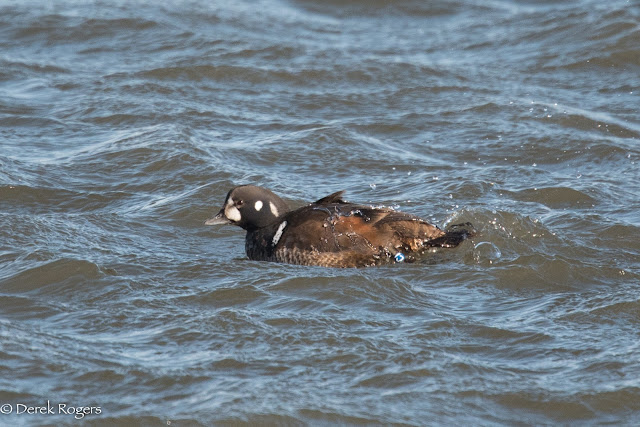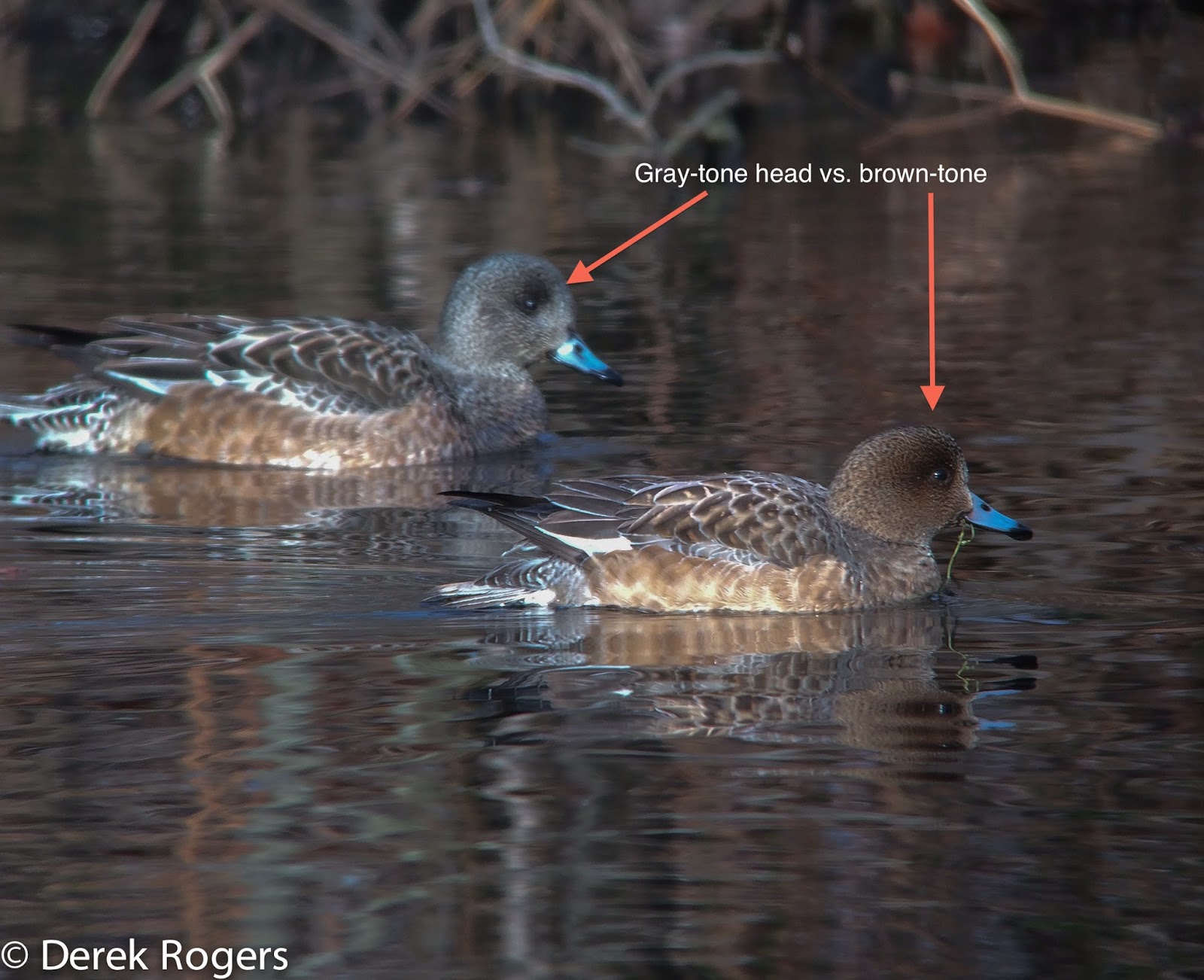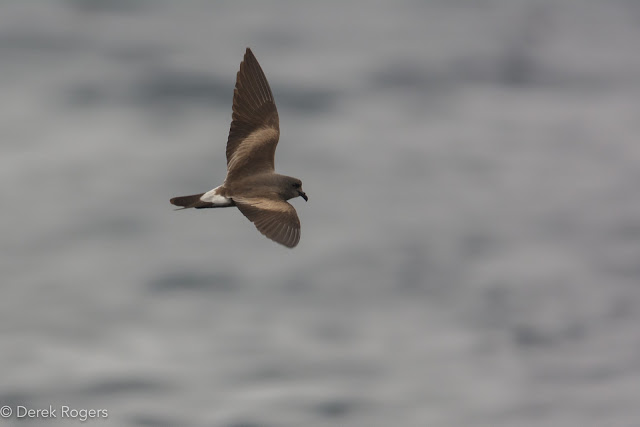West Coast Harlequin Duck migrates to East Coast.
6
January 2018 was one of the most frigid birding days I can remember along the
beaches of Long Island. I visited Shinnecock Inlet, where the outgoing tide
sucked miniature ice floes into the ocean and wind chill temperatures dipped
below -10°F.
 The region was nearing the end of a prolonged cold snap that
locked up most of the Island’s beaches and bays in a thick layer of ice. For
the first time in many years, portions of the South Shore bays were completely
frozen from the mainland to the barrier beach which forced congregations of
waterfowl into the free-flowing ocean and inlets. There wasn’t an overwhelming
amount of birds in the inlet on this day but an immature male Harlequin Duck
caught my attention. Harlequin Ducks have been declining throughout the years
and are becoming scarce on Eastern Long Island, even at traditional locations
such as Shinnecock Inlet. Despite the blustery conditions, I
was able to capture a series of photos of the young male Harlequin from atop
the jetty before eventually retreating to my vehicle for warmth. Later that
evening, while processing photos, it became apparent that the bird was sporting
a blue band on its left leg with white characters “CI.” How fortunate to have
captured a legible leg band in the photos, especially given the conditions.
There was only one opportunity when the bird rolled to its right while
preening, briefly exposing its left leg and, ultimately, the band. What makes this
resight particularly remarkable is the fact that "CI" was banded
along Upper McDonald Creek at Glacier National Park in Montana this past summer
on 29 August 2017.
The region was nearing the end of a prolonged cold snap that
locked up most of the Island’s beaches and bays in a thick layer of ice. For
the first time in many years, portions of the South Shore bays were completely
frozen from the mainland to the barrier beach which forced congregations of
waterfowl into the free-flowing ocean and inlets. There wasn’t an overwhelming
amount of birds in the inlet on this day but an immature male Harlequin Duck
caught my attention. Harlequin Ducks have been declining throughout the years
and are becoming scarce on Eastern Long Island, even at traditional locations
such as Shinnecock Inlet. Despite the blustery conditions, I
was able to capture a series of photos of the young male Harlequin from atop
the jetty before eventually retreating to my vehicle for warmth. Later that
evening, while processing photos, it became apparent that the bird was sporting
a blue band on its left leg with white characters “CI.” How fortunate to have
captured a legible leg band in the photos, especially given the conditions.
There was only one opportunity when the bird rolled to its right while
preening, briefly exposing its left leg and, ultimately, the band. What makes this
resight particularly remarkable is the fact that "CI" was banded
along Upper McDonald Creek at Glacier National Park in Montana this past summer
on 29 August 2017.
There are several
researchers in North America, both East and West Coast, who band Harlequins
within their respective, isolated breeding territories. Since 2011, the Glacier
Program has banded a total of 210 Harlequin Ducks at Upper McDonald Creek; 47
females, 51 males, and 112 chicks.
 |
| Harlequin Duck - Shinnecock Inlet, 6 January 2017 |
Harlequin Ducks have
historically been divided into two separate and distinct ranges; the Pacific
coast and the Atlantic coast. Early nomenclature once delineated two
subspecies; H. h. histrionicus (Atlantic) and H. h. pacificus
(Pacific) but this distinction is no longer recognized. Based on past and
current research, it has always been understood that western breeding
populations winter along the Pacific coast and eastern populations along the
Atlantic, as one would expect. According to the research, the 6 January 2018
Shinnecock resight constitutes the first ever documented record of a
"Pacific coast" Harlequin Duck migrating to the Atlantic coast. There
is a previous record of a juvenile, first-fall Harlequin Duck, also with Montana
origins, taken by a duck hunter on Lake Erie, Erie, Pennsylvania in the fall of
2015. Other than the Lake Erie record, there is no existing evidence that West
Coast breeding populations make the long journey east across the continent to
winter along the Atlantic coast. This new evidence raises many questions and
will keep the research teams scratching their heads for some time. Hopefully
continued related studies will shed more light on the complex life history of
this declining species.



Comments
Post a Comment